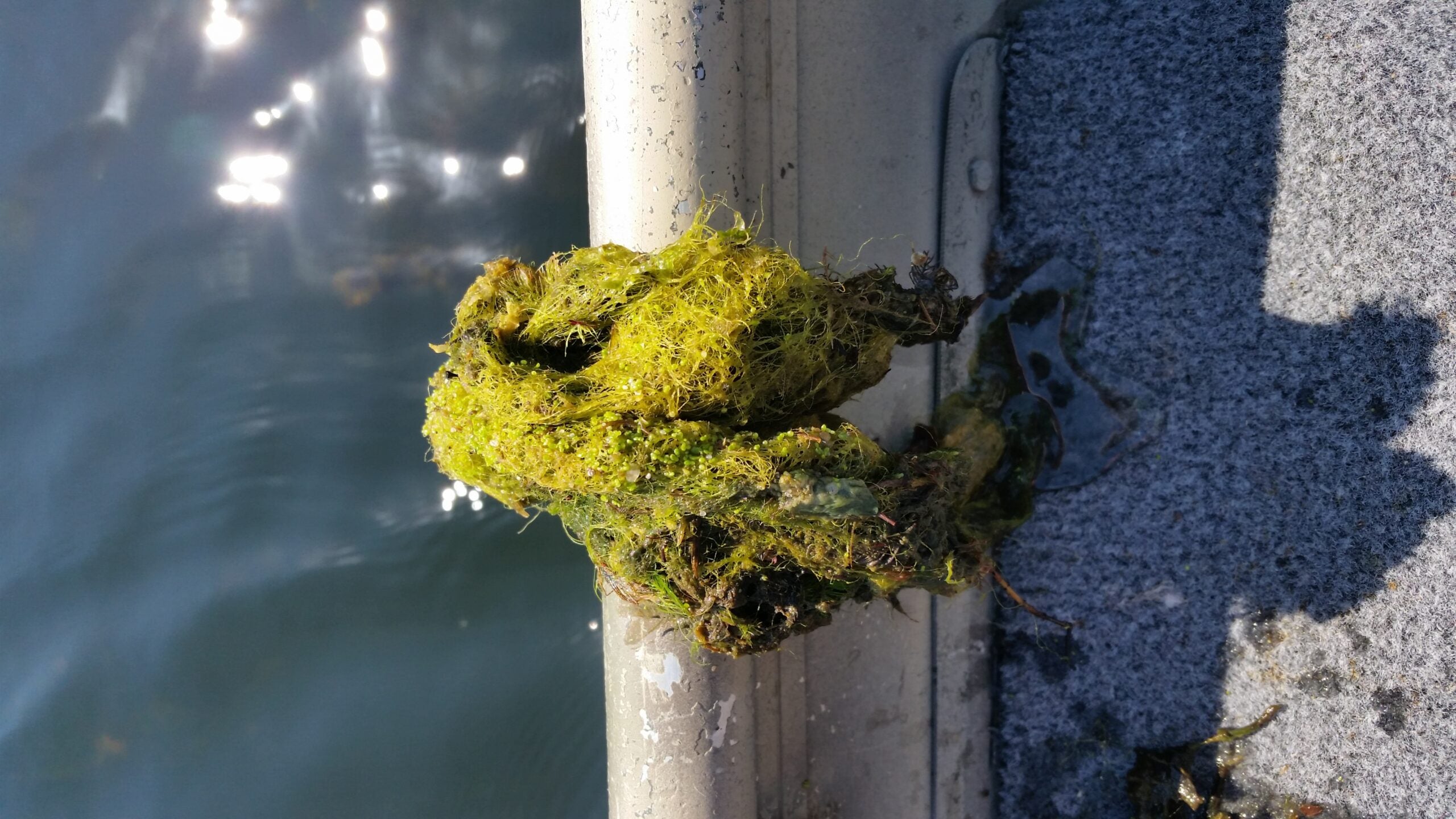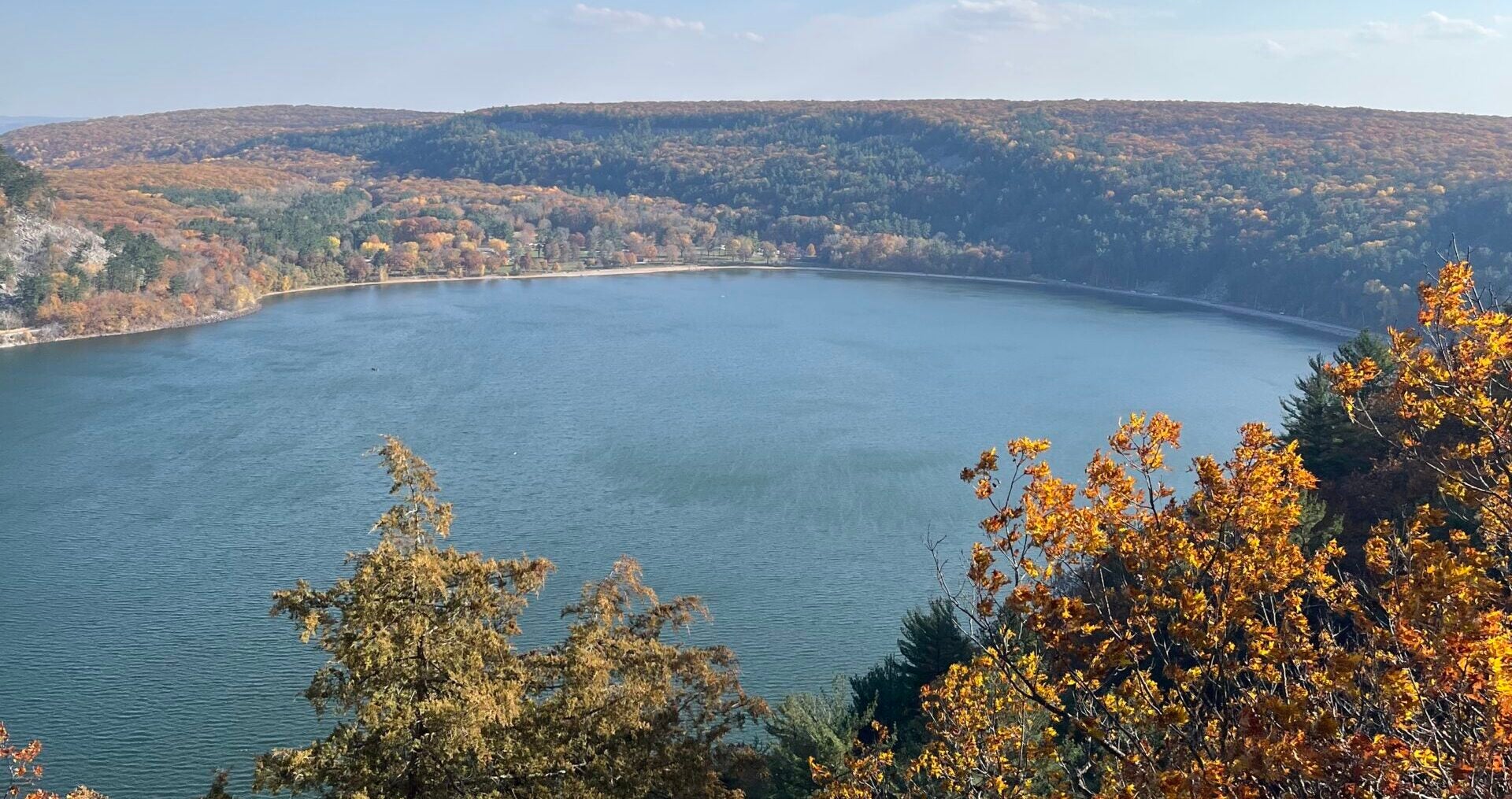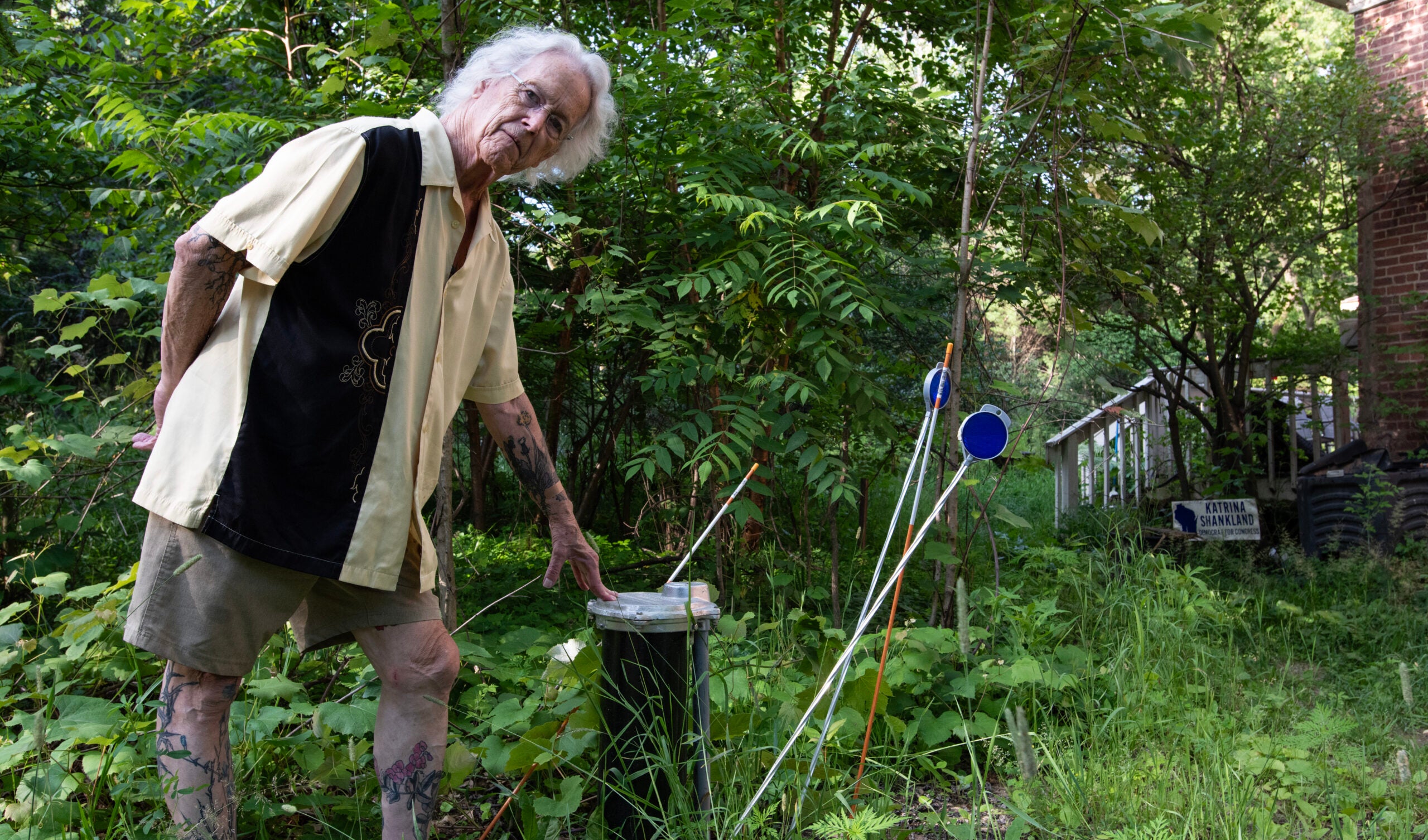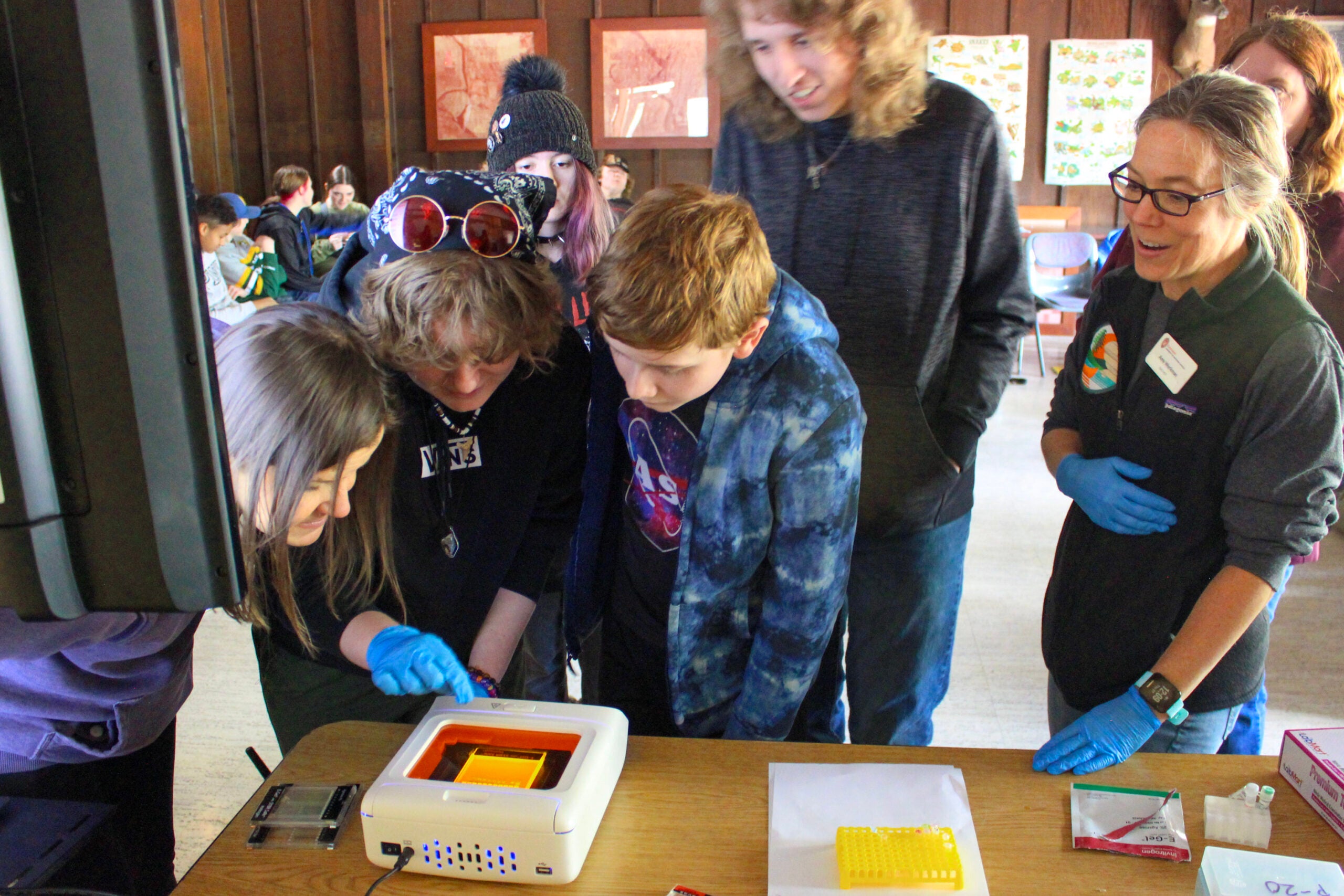It has been nearly 30 years since special environmental protections were put in place for a 92-mile stretch of the Lower Wisconsin River — from Prairie du Sac to its confluence with the Mississippi River. By most accounts, the river bluffs and water in the main channel are in good shape. But scientists are increasingly concerned about the sloughs, or backwaters of the river, because of excessive growth of algae and other vegetation.
Just off state Highway 60, east of Spring Green, hydro-geologist Ken Wade is looking for causes of the pollution. On a routine monitoring trip, Wade takes the cap off one of three wells that Wade regularly checks to keep track of the quality of the groundwater. He and another hydro-geologist, Dave Marshall, take a water sample and test it with a meter. Marshall gives the reading. “It’s gonna be roughly between 15 and 16 (milligrams per liter) nitrate, nitrogen,” Marshall said.
Marshall said that’s too high, as the nitrate level is likely contributing to a problem about 100 feet to the south, in a Lower Wisconsin River backwater called Jones Slough. Marshall walks down to the edge of the slough, looking at the green and brown carpet of vegetation.
News with a little more humanity
WPR’s “Wisconsin Today” newsletter keeps you connected to the state you love without feeling overwhelmed. No paywall. No agenda. No corporate filter.
“You see very little open water. Some days you see absolutely no open water. And that’s because of the dense growths of filamentous algae and duckweed, which are being fueled by the high nitrogen concentrations,” Marshall said.
Marshall explains that here in the river valley a lot of nitrogen, including that found in manure, is put on nearby farms that are grown on particularly sandy soil. Marshall said the area is also called “the sand terrace.” He contends too much nitrogen is applied and a lot of it leaches into the groundwater, which flows directly into the sloughs.
This excessive plant growth is found in many of the 100 or so backwaters along the Lower Wisconsin River, Marshall said. Including Cruson Slough, near the village of Lone Rock.
At Cruson, Marshall and Wade head out on the water in a small boat. Cruson is a bigger body of water, and is farther away from potential nitrogen sources, so the nitrate level isn’t as bad as it is in Jones Slough. But Marshall said the contamination has been growing in recent years.
“Historically, these, you know, shallow oxbow lakes were very clear and weedy. Just ideal fish and wildlife habitat, but now we’re seeing a shift,” he said.
Marshall said not only is recreational fishing less pleasant in many of the sloughs, but rare fish species like the Starhead Topminnow are at risk. He also says during floods, the backwaters can carry contaminants into the main river channel.
Wade said he and Marshall — both retired Wisconsin Department of Natural Resources employees and active members of Friends of the Lower Wisconsin Riverway — are setting the stage for potential action on the nitrogen issue.
“We are defining the problems and giving enough detail, so even if we don’t have an immediate solution, people understand what the problem is,” Wade said.
DNR water resources specialist Jean Unmuth also studies the Lower Wisconsin sloughs and calls them jewels, or pearls in the landscape. She says agriculture is not the only source of contaminants. “But there are impacts from runoff from cities and villages, as well as people that fertilize their lawns that live along some of these sloughs. We need to work as a whole, a broadscale effort of all folks to protect these waters,” Unmuth said.
She added that there are things farmers can do to reduce the flow of polluted groundwater, such as putting cover crops on fields or cutting the amount of manure application and irrigation near the sloughs. But she said in many cases, such action is voluntary, and it’s up to state policymakers to decide otherwise.
Mark Cupp. executive director of the Lower Wisconsin State Riverway Board, said those policymakers may want to consider the economic benefits of a clean riverway, bluff to bluff.
“Because we’re within a four and a half hour drive of 20 million people, and it’s beautiful here! And it’s important we protect these places, including the backwaters, not just the river and the bluffs,” Cupp said.
The Friends of the Lower Wisconsin Riverway said the sloughs will be one of the topics at a two-day State of the Riverway symposium being held in Spring Green, beginning Saturday.
Wisconsin Public Radio, © Copyright 2025, Board of Regents of the University of Wisconsin System and Wisconsin Educational Communications Board.







